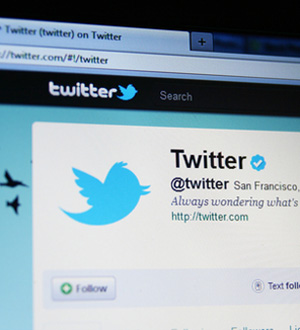How tweeting police help keep the streets of Sheffield safe

South Yorkshire Police on using Twitter to stop riots before they start...
In the wake of the recent riots across England politicians called for Twitter to be shut down during times of unrest for fear of rioters using the social network to co-ordinate violence.
But in Sheffield, Britain's fourth-largest city, police are using the social network to help prevent major events and protest marches from degenerating into disorder.

Sheffield police use Twitter to inform protesters and the public, and defuse potential violencePhoto: Annette Shaff/Shutterstock
The South Yorkshire Police force that serves the city cut its teeth on social media during the Liberal Democrat Conference in Sheffield in March this year.
Tensions were running high ahead of the conference - the Conservative party headquarters had been trashed in violent protests about university fees in London and thousands of students were planning to congregate in Sheffield to picket the Lib Dem gathering.
"We had intelligence that suggested widespread disorder leading on from London. We had the potential for real trouble there," Inspector Jayne Forrest of South Yorkshire Police told silicon.com at RIM's annual customer conference in London on Wednesday.
Police wanted to find a way to engage directly with protesters and chose to approach them through Twitter, based on the fact that police knew a large number of demonstrators would be tweeting from mobiles during the protests.
Forrest led the initiative, setting up a personal account to start talking to protesters and sharing information about what police were up to.
"I tried to establish a relationship and an open exchange on Twitter - to show the human face of the police," she told silicon.com.
"This enabled us to take the temperature of the crowd and gauge their feelings.
"For example, word went around, 'There are snipers on John Lewis' roof' and I could say, 'No they're not they're just police officers'. Somebody put a picture on Twitter of somebody holding a flare and put underneath, 'We are raging against the Lib Dems'. So I posted, 'Don't be lighting flares, they're dangerous and you'll get arrested'. Immediately the temperature came down - it was almost tangible."
By monitoring conversations about the protests on Twitter, Forrest said she was able to...
...defuse tension and misunderstandings before they spread.
"There was a lot of reference to kettling because we set up a protester area outside City Hall. We got the message out that it's for your safety, there are gates at the front and gates at the back and everybody who wants to leave can do.
"It went from a conversation about, 'We're being kettled' to the majority of people saying, 'Thanks for the information' - they might not like it or agree with it but they got the message and got it quickly."
Using Twitter, Forrest arranged to meet with protest leaders, and agreed the route of the demonstration and how the protesters would conduct themselves. Ultimately, despite the fears of a repeat of the violence seen in London, "there was no trouble, no disorder and no arrests", said Forrest.
Following the Lib Dem conference, the force is continuing to use Twitter and is in the process of giving each one of its 3,000 officers and support staff an app and training to tweet from their BlackBerrys.
Forrest credits the force's use of Twitter with playing a small role in helping Sheffield escape the violent unrest that swept across London, Birmingham and other large English cities in August.
"We responded quite quickly through social media," she said.
"I was basically appealing to people's inner good - 'Come on people of Sheffield, we're better than this'. Maybe it's no accident that we didn't suffer any riots as the fourth-largest city."
The force now regularly uses Twitter to...
...distribute information and communicate with groups of people during major events via official and individual officer's accounts. Forrest said each officer and official account uses the same hashtag to group their tweets during major events like football matches, music concerts and protests.
"We have a day of action that's taking place for the teacher's strike in November so we'll have a hashtag for that. The beauty is that I'm already talking to these people who are striking [using Twitter], so we've already got that relationship established."
Air force personnel tweet from the South Yorkshire Police helicopter to keep residents informedPhoto: Andrew
As an increasing number of South Yorkshire officers start to use Twitter, the force is finding new uses for the social network. The team that flies the force's helicopter tweets from @SYP_AirOps to let people who've seen the chopper out and about know what they're up to. An example of a typical tweet is: 'Officers in pursuit of stolen vehicle. Abandoned in city prior to our arrival. Driver detained, enquiries ongoing'.
Meanwhile, some officers on foot patrol have taken to tweeting their whereabouts or taking Twitpics as they walk the street.
Forrest admitted that not everyone in the force was a fan of Twitter but said she was an example of how easy it is for someone unfamiliar with the service to pick it up.
"It's change isn't it? You get people who embrace change and people who resist it, so we try to take people on the journey with us but if we have to drag them with us, so be it," she said.
"I was a bit, 'I'm not sure about this' at first but I can do it and I'm not particularly technologically minded. It's easy isn't it? I say to people it's just like having a conversation."